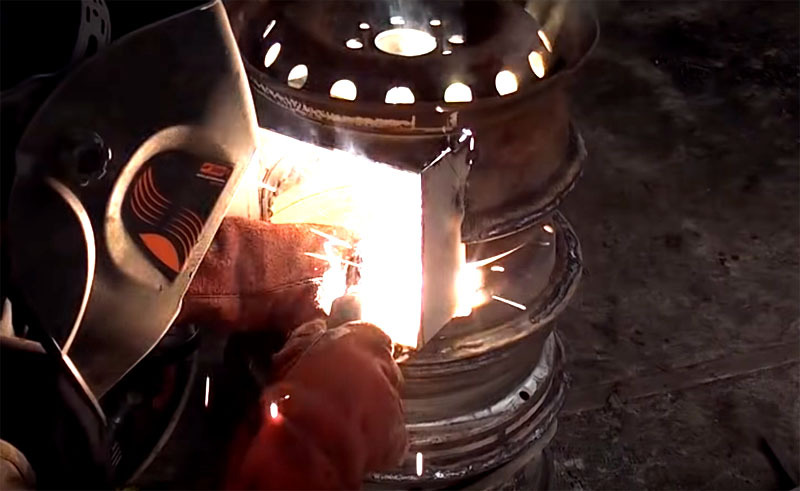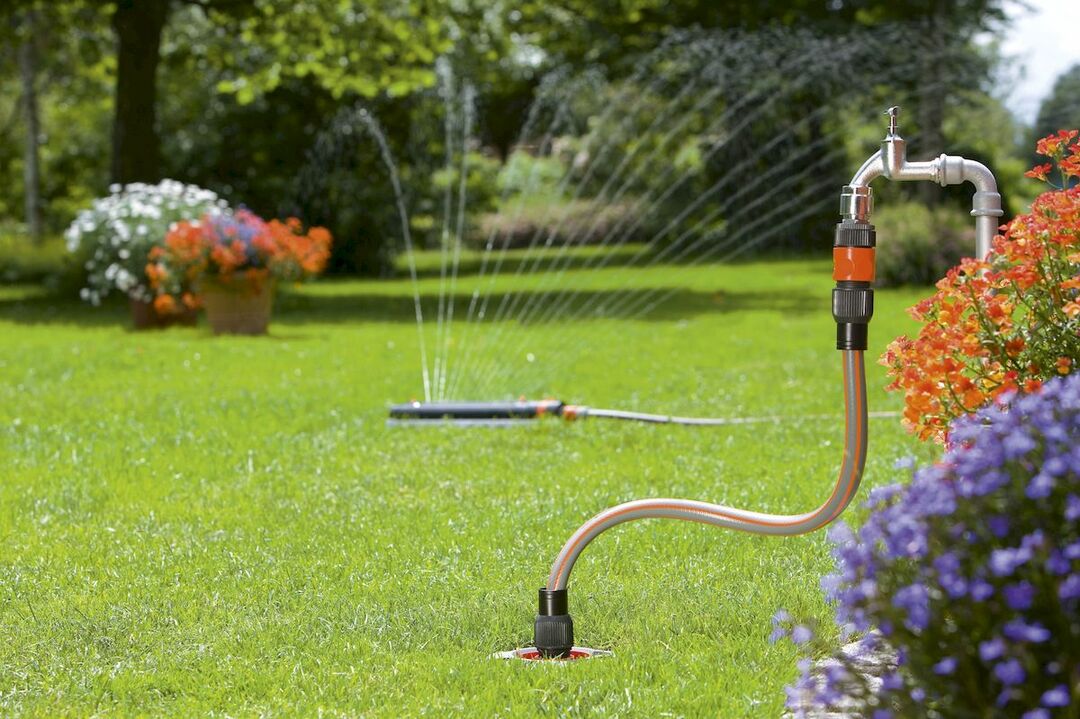The main type of cable today - yet twisted pair
CONTENT
- 1 Coaxial cable network
- 2 Network cable, twisted pair
- 3 Fiber optic cable
- 4 How to choose a network cable - the recommendations of our editorial
Coaxial cable network
Actually, the coaxial cable can be called the grandfather of all modern cables. His story begins with the already distant 1880. For quite a long time, it is widely used where it is necessary to transmit a signal - communication, television, various tools and electronic devices. For Internet use cables labeled RG-11, RG-8 and RG-58. It is they who us interested.
Device
The name "coax" translated as "coaxial". The fact that the conductors within the cable are located on the same axis with each other. That is, there is one inner conductor, which is located around the other and an insulation layer interposed therebetween. The simplest version of the coaxial cable saw every one of us - a TV antenna or a cable from the cable box.
Core insulation and the screen - three coaxial components
As we have said for computer networks used three main types: RG-11, RG - 8 and RG-58. They even got their names - thick and thin Ethernet. Thin or RG-58 used more often, since he had excellent flexibility and cost relatively inexpensive. Thick on the contrary, it was a "clumsy" - badly dented, and the cost for the time disproportionately expensive. Therefore, I used much less frequently.
types of connectors
For connection with a computer or with each other connectors applied. This special nozzles that are simply inserted into the connectors with similar polarity - that is, an inner conductor with an internal connector, and external to the outside.
BNC plug for coaxial cable
But with the "thick» Ethernet, which is used less frequently, the situation was more complicated. There had to use a special transceiver connected to the network card.
Data Standards
For transmission over a coaxial cable type Ethernet «fat» data used 10Base-5 specification. Compound cable happened via special device - transceiver or as it is also called "Vampirchiki". This name was given because of the connection method.
Such was the setting for the connection - Vampirchiki
Vampirchiki had two side and one central spike, which is dug into the coaxial cable. Middle receiving contact with the inner conductor and the side with the outside. The maximum available rate of such a compound is 10 Mbit / s, and the segment length can not exceed 500 m.
In the thin Ethernet specification used 10 Base-2 and BNC connectors, which we have already talked a little bit higher. Maximum data transfer rate - 10 Mbit / s. A distance network segment - 185 m.
Advantages and disadvantages
One of the main advantages of the coaxial cable is considered his "omnivorous." It can be used to transmit virtually any type of signals. Yes, he still has and is used as a signal transmission from analogue antenna and cable television.
Also worth noting is the cable accessibility and ease of installation. To gather together the network almost did not need a specialized tool.
As for the drawbacks, the most important, and that affected the damping of this type of cable, you can assume a relatively complicated process of adding a new common network node, and network instability in the case of gap.
Network cable, twisted pair
The most popular to date cable. With a large percentage of probability we can say that your home internet provider uses his name.
Device
Twisted pair - a pair of wires in isolation, entwined around each other. Regardless of the number of wires is usually accepted any such cable is called a "twisted pair."
Twisted pair with a common shielding foil
If it is necessary to clarify what kind of pair, the indicated category. As of 2018 there are 8 main categories, which can be modified. Now you can find the cables category 5 or above. Sometimes, in older systems you can find 3 or 4. The relationship between cable performance and its category is directly proportional. That is, the higher the grade, the better the cable. Naturally, in similar types of networks.
What is interesting, the decision to twist it a couple of times, when the main communication was the telegraph. Then the growing number of electrical wires created a serious interference with communication lines. And engineers have come up with me on my place, that is to curl them with a certain step. This will reduce the noise in the lines. With the same intent scrolls and modern twisted pair.
types of connectors
With connectors in twisted pair observed a small mess. It is believed that the connector uses an RJ-45.
RJ-45, also known as 8P8C
He even indicated in the specifications of shops retailers. In fact, such a connector is officially in the classification standards there. There are only 4-wire RJ-45S, which has not been widely adopted. Our own is marked 8P8C, which includes a series of connectors. But once the name stuck, and everyone understands what they mean in the pronunciation «RJ-45", we will also use this name.
Crimper or "crimp" connectors for mounting on cable
RJ-45 plug is a plastic container inside which there are copper pins. When crimping the cable, these pins penetrate each conductor, forming a contact. Total contacts should be eight. For compounds of different types of nodes used different configuration crimping. It is expressed in the arrangement of wires within the connector. For ease of installation and crimping each conductor has its own color isolation. More precisely, each pair has a color and a variant thereof with an admixture of white. For example, blue and blue-white.
Features shielded and unshielded versions
International Standard ISO / IEC 11801 clearly defines shielding twisted pair. To understand what is in front of us just look at the marking of the cable. She usually looks something like this: U / UTP. Letter to the slash and the first after just refer to the screening.
EXAMPLE markings on the twisted pair cable
The first - a general screening, the second - the individual. Symbols used are: U (unshielded) - unshielded; S (braided screening) - metal sheath, is used only for screen sharing and F (foil) - foil shield. So now, if we see a cable with S / FTP marking, we understand that our cable has an overall screen from the metal sheath and each pair is wrapped in foil. It's pretty simple.
Data Standards
Cable category, in addition to reflecting the number of pairs, also characterizes the data transmission standards. Since category 5 cable can use Fast Ethernet and Gigabit Ethernet standards with speeds of 10 and 100 Mbit / s, respectively.
Advantages and disadvantages
For today's networks, especially local, twisted pair has more advantages than disadvantages. First of all, it is easy to install. Cable crimping only requires knowledge of the correct wiring layout in the connector and a special tool called Crimper. While at home it is possible to compress the twisted pair cable and a screwdriver. It is not always the first time. Good flexibility of the cable can also be attributed to the ease of installation and operation. The advantages can be attributed to the low price. Of significant disadvantages can be considered poor resistance to electromagnetic interference, which is partially solved by a shielding.
Fiber optic cable
Fiber-optic communication is today considered the most expensive, but also the most high-speed method of data transfer. Well, let's deal with them in detail.
Device
Physically cable is common wire made of metal or plastic, around which the plastic modules are assembled with the fibers contained therein.
A schematic view of the fiber cross-sectional
Depending on the type of cable, it may contain additional protection elements made of plastic, polyethylene, and metal.
connectors
Main types of connectors that are most commonly used network installers, there are three:
- FC. Durable metal cap screwing mechanism and the spring. Used to create a reliable and durable connections;
- SC. Simple, but rather a cheaper version of FC. Made of plastic and is equipped with a latch. Naturally, less durable;
- LC. A more compact version of the SC. Mainly used for connecting nodes in offices or server.
Features of singlemode and multimode versions
The fibers in the cable can be single mode and multimode. In short, fashion - this is the way of following the light signal.
Schematic representation of the differences of one mode and more
And if the fiber core has a size of 10 microns or less, the light propagates without reflections and scatterings. Thus, the fiber should be just one mode, ie a signal light. The multimode type implies a large dispersion and as a consequence of multiple paths of the light signal passes. In general, the difference between them is, in fact, lies in the core width. It follows that the smaller events, the faster the signal will be transmitted over longer distances can be sent.
Advantages and disadvantages
The main plus of the fiber - high speed data transmission over long distances. In this case, the data loss is minimal. Optical fibers are least susceptible to various kinds of interference. The advantages include small size and weight.
The disadvantage is poor resistance to the effects of ionizing radiation. It's certainly rare, but still sometimes occurring.
Another significant disadvantage of complexity deemed welding and signal attenuation in the docking site.
How to choose a network cable - the recommendations of our editorial
In fact, in 90% of cases, selection will take place in one of the categories of twisted pair, coax as the hopelessly outdated, and optics are used in a narrow specificity. For easy connection of multiple computers one network approach category 5e or 6. Their capacity will be enough to implement a home network. True, this will have the cable on either side of crimp connectors.
A visual representation of light transmission through the fiber process
In order not to bother with crimping can take one or more ready-made patch cords - ready-to-use cables equipped with connectors at both ends. Dimensions meet the most different. Of course, the finished patch cord will cost more expensive than a simple cable. But if time is more expensive, the decision takes place.



